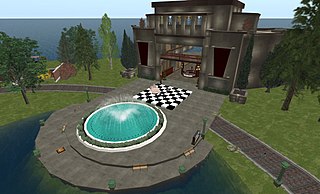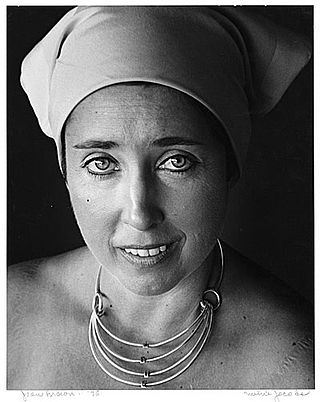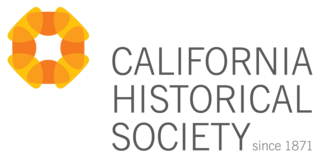Related Research Articles

A science museum is a museum devoted primarily to science. Older science museums tended to concentrate on static displays of objects related to natural history, paleontology, geology, industry and industrial machinery, etc. Modern trends in museology have broadened the range of subject matter and introduced many interactive exhibits. Modern science museums, increasingly referred to as 'science centres' or 'discovery centres', also feature technology.

The Panama–Pacific International Exposition was a world's fair held in San Francisco, California, United States, from February 20 to December 4, 1915. Its stated purpose was to celebrate the completion of the Panama Canal, but it was widely seen in the city as an opportunity to showcase its recovery from the 1906 earthquake. The fair was constructed on a 636 acre(1 sq. mi., 2.6 km2) site along the northern shore, between the Presidio and Fort Mason, now known as the Marina District.

The Tech Interactive is a science and technology center that offers hands-on activities, labs, design challenges and other STEAM education resources. It is located in downtown San Jose, California, adjacent to the Plaza de César Chávez.

A virtual museum is a digital entity that draws on the characteristics of a museum, in order to complement, enhance, or augment the museum experience through personalization, interactivity, and richness of content. Virtual museums can perform as the digital footprint of a physical museum, or can act independently, while maintaining the authoritative status as bestowed by the International Council of Museums (ICOM) in its definition of a museum. In tandem with the ICOM mission of a physical museum, the virtual museum is also committed to public access; to both the knowledge systems embedded in the collections and the systematic, and coherent organization of their display, as well as to their long-term preservation. As with a traditional museum, a virtual museum can be designed around specific objects, or can consist of online exhibitions created from primary or secondary resources. Moreover, a virtual museum can refer to the mobile or World Wide Web offerings of traditional museums ; or can be born digital content such as, 3D environments, net art, virtual reality and digital art. Often, discussed in conjunction with other cultural institutions, a museum by definition, is essentially separate from its sister institutions such as a library or an archive. Virtual museums are usually, but not exclusively delivered electronically when they are denoted as online museums, hypermuseum, digital museum, cybermuseums or web museums.

Joan Brown was an American figurative painter who lived and worked in Northern California. She was a member of the "second generation" of the Bay Area Figurative Movement.

Samina Ali is an American author and activist born in India. Her debut novel, Madras on Rainy Days, won the Prix du Premier Roman Etranger award from France and was a finalist for the PEN/Hemingway Award in Fiction.
Wally Bill Hedrick was a seminal American artist in the 1950s California counterculture, gallerist, and educator who came to prominence in the early 1960s. Hedrick's contributions to art include pioneering artworks in psychedelic light art, mechanical kinetic sculpture, junk/assemblage sculpture, Pop Art, and (California) Funk Art. Later in his life, he was a recognized forerunner in Happenings, Conceptual Art, Bad Painting, Neo-Expressionism, and image appropriation. Hedrick was also a key figure in the first important public manifestation of the Beat Generation when he helped to organize the Six Gallery Reading, and created the first artistic denunciation of American foreign policy in Vietnam. Wally Hedrick was known as an “idea artist” long before the label “conceptual art” entered the art world, and experimented with innovative use of language in art, at times resorting to puns.

Emory Douglas is an American graphic artist. He was a member of the Black Panther Party from 1967 until the Party disbanded in the 1980s. As a revolutionary artist and the Minister of Culture for the Black Panther Party, Douglas created iconography to represent black-American oppression.

The California Historical Society (CHS) is the official historical society of California. It was founded in 1871, by a group of prominent Californian intellectuals at Santa Clara University. It was officially designated as the Californian state historical society in 1979. Its headquarters are in San Francisco, though it hosts exhibits and collections across California.

The GLBT Historical Society maintains an extensive collection of archival materials, artifacts and graphic arts relating to the history of LGBT people in the United States, with a focus on the LGBT communities of San Francisco and Northern California.

Sally Ann Lilienthal, née Lowengart, was an American nuclear disarmament activist who founded the Ploughshares Fund in 1981 during the Cold War in the belief that the threat of nuclear war overshadowed everything else. The Ploughshares Fund continues to provide grants to individuals and organizations advocating against nuclear weapons. Lilienthal also served as national vice chairwoman of Amnesty International in 1977. Lilienthal was also an artist and art advocate who served on the board of the San Francisco Museum of Modern Art for most of the 1970s.

Active since 1995, Mail Order Brides/M.O.B. is a Filipina American artist trio known for their use of humor and camp to explore issues of culture and gender. Founded in San Francisco by artists Eliza Barrios, Reanne Estrada, and Jenifer K. Wofford, the group's full name, Mail Order Brides/M.O.B., conflates a once-common stereotype of Filipina women as "mail order brides" with an acronym suggestive of an organized crime organization. The group has often been referred to in shorthand as "M.O.B."

An online exhibition, also referred to as a virtual exhibition, online gallery, cyber-exhibition, is an exhibition whose venue is cyberspace.

Bonnie Ora Sherk was an American landscape-space artist, performance artist, landscape planner, and educator. She was the founder of The Farm, and A Living Library. Sherk was a professional artist who exhibited her work in museums and galleries around the world. Her work has also been published in art books, journals, and magazines. Her work is considered a pioneering contribution to Eco Art.
San Francisco Women Artists (SFWA) is one of California's oldest arts organizations. Created in 1887 as the Sketch Club, the organization was created by local San Francisco Bay Area women to support and promote the talents of established and emerging Bay Area women artists. Located in San Francisco's Sunset District, SFWA is a nonprofit organization that welcomes all genders, while specifically serving women artists.
Harry Potter: The Exhibition is a travelling exhibition based on the Harry Potter series of books and films, which features props, costumes, and other artefacts. The first iteration of the exhibition ran from April 2009 to March 2020. A second iteration of the exhibition is scheduled to premiere in early 2022.
Maria Adela Diaz is a Guatemalan contemporary artist. She was born in 1973, during the Guatemalan Civil War. She mentions that, as a Guatemalan citizen, she feels that political issues are a part of her identity and that a lot of her and her family's experiences are reflected through her artwork. Diaz is a self taught artist as well as a graphic designer, and has worked in the press, publicity, and media. While she does not consider herself a feminist, many of her works have been displayed in feminist exhibitions; she considers her work feminine because it is work done by a woman.
Ralph Helm Johonnot (1880–1940) was an American artist, designer, and arts educator, he is known for his educational series on color and interior decoration. He created paintings and prints, within the Arts and Crafts movement of still life and landscapes, as well as creating decorative work with his wife Salome Lavinia Johonnot. Together with Salome, they traveled to give educational lectures on the arts and created two private art schools, the Ralph Johonnot Studio in Richmond, California and Johonnot Summer School of Design and Hand Work in Pacific Grove, California. He was active in the arts throughout the state of California from approximately 1912–1940.
Wanxin Zhang is a Chinese-American sculptor based in San Francisco, known for his large-scale ceramic figures, formless ceramic structures, and bronze pieces. He is recognized as one of the leading artists in the new generation of the Bay Area clay movement. Zhang's work is characterized by a fusion of California Funk influence and references to Chinese history. His monumental clay figures convey themes of globalization, politics, and power by reshaping traditional symbols with contemporary pop culture elements. Zhang's work is in the Smithsonian American Art Museum Collections.
Elizabeth Hernández is a Mexican-born American visual artist and designer. She works many mediums including in painting, murals, ceramics, and embossed aluminum sculpture. She lives in Oakland, California.
References
- 1 2 "News Release: Global Fund for Women and International Museum of Women Merge". Global Fund for Women. Archived from the original on September 5, 2015.
- 1 2 "Iron Ladies uncovered". International Museum of Women (now part of the Global Fund for Women). Retrieved 10 October 2016.
International Museum of Women
now part of Global Fund for Women - 1 2 3 "Our Story". International Museum of Women. Archived from the original on 2011-01-28. Retrieved 2011-01-20.
- 1 2 Duxbury, Sarah (June 5, 2009). "International Museum of Women names new executive director". San Francisco Business Times . Retrieved 2013-04-28.
- ↑ Allende, Isabel; Paula Goldman (2006). Imagining Ourselves - Global Voices from a New Generation of Women. New World Library. ISBN 1-57731-524-3.
- ↑ Hamlin, Jesse (March 14, 2006). "A Generation of Powerful Women". San Francisco Chronicle . Retrieved 2013-04-28.
- ↑ Said, Carolyn (November 14, 2009). "Museum touts women's role in global businesses". San Francisco Chronicle. Retrieved 2013-04-28.